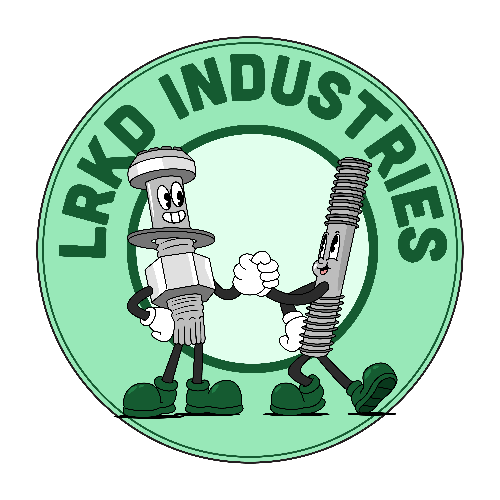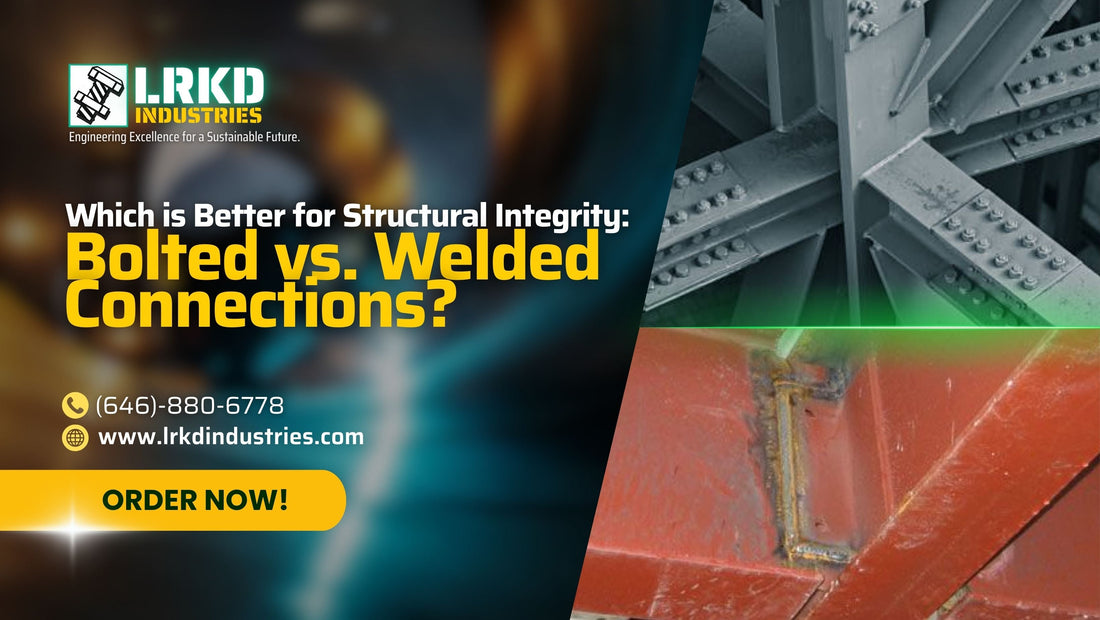Imagine standing beneath a massive steel bridge or inside a high-rise building. Have you ever wondered how these enormous structures hold together? The answer lies in two primary joining techniques: bolted connections and welded connections. Both methods are widely used in construction and engineering, but which one is superior when it comes to structural integrity?
Whether you're a structural engineer, a contractor, or someone curious about the science of construction, understanding the strengths and weaknesses of these connection types is crucial. This article breaks down the differences, advantages, and best use cases of bolted and welded connections to help you make the right choice for your project.
Understanding Bolted and Welded Connections
What Are Bolted Connections?
Bolted connections involve fastening two or more structural elements using high-strength bolts, nuts, and washers. These connections are commonly found in steel structures, bridges, and buildings because they allow for disassembly and easy modifications.
Advantages of Bolted Connections:
Easy Installation & Removal – Components can be assembled and disassembled quickly.
Higher Quality Control – Bolts are pre-manufactured and tested for strength.
Greater Flexibility – Perfect for structures that require future modifications.
Minimal On-Site Labor – Pre-drilled holes ensure precision in assembly.
Better Performance Under Fatigue Loads – Can handle cyclic loading better than welded joints.
Disadvantages of Bolted Connections:
Loosening Over Time – Vibration and external forces can cause bolts to loosen.
More Material Required – Additional plates, washers, and nuts add weight and cost.
Lower Aesthetic Appeal – Bolted joints may not be as visually seamless as welded joints.
What Are Welded Connections?
Welded connections involve fusing metal components together using heat and pressure. This creates a continuous joint without the need for additional fasteners. Welded connections are widely used in applications where seamless strength and rigidity are essential.
Advantages of Welded Connections:
Stronger & More Rigid – Welds create monolithic joints, ensuring greater load transfer.
Aesthetic Appeal – Smooth, clean joints without protruding bolts.
Less Material Usage – No additional plates or fasteners required.
Ideal for High-Load Conditions – Perfect for applications where strength is a priority.
Disadvantages of Welded Connections:
Difficult to Modify or Repair – Once welded, it is challenging to make changes.
Higher Labor Costs – Requires skilled welders and strict quality control.
Vulnerability to Fatigue & Cracking – Welds can develop cracks under repetitive stress.
Weather-Dependent Installation – Welding outdoors requires protective measures against wind and rain.
Comparing Structural Integrity: Bolted vs. Welded Connections
Strength & Load-Bearing Capacity
Both bolted and welded connections can be designed to handle high loads, but their performance varies depending on the application:
|
Factor |
Bolted Connections |
Welded Connections |
|
Load Transfer |
Load is transferred through bearing or friction. |
Load is transferred continuously across the joint. |
|
Tensile Strength |
High-strength bolts (e.g., ASTM A325, A490) provide great tensile resistance. |
Welded joints often outperform bolted connections in pure tensile loading. |
|
Fatigue Resistance |
Bolts allow for movement, reducing stress concentration. |
Welded joints can develop cracks over time under cyclic loading. |
Durability & Longevity
Durability is critical for the long-term stability of structures. Factors such as environmental exposure and fatigue must be considered.
|
Factor |
Bolted Connections |
Welded Connections |
|
Corrosion Resistance |
Can be improved with galvanized bolts and coatings. |
Welded joints can corrode at heat-affected zones. |
|
Fatigue Performance |
Better at handling fluctuating loads. |
More prone to fatigue cracks, requiring reinforcement. |
|
Weathering Effects |
Bolts may loosen under extreme temperature changes. |
Welding can cause residual stresses that affect durability. |
Installation & Maintenance
Ease of installation and long-term maintenance requirements also play a role in selecting the right connection type.
|
Factor |
Bolted Connections |
Welded Connections |
|
Installation Time |
Faster due to pre-manufactured components. |
Slower due to on-site welding and inspection. |
|
Skilled Labor Requirement |
Requires semi-skilled workers. |
Requires highly skilled welders. |
|
Inspection & Maintenance |
Easy to inspect and replace faulty bolts. |
Requires non-destructive testing (NDT) for hidden defects. |
Real-World Applications: When to Use Which?
Best Applications for Bolted Connections:
✅ Prefabricated structures (e.g., warehouses, bridges)
✅ Temporary or modular constructions
✅ Projects requiring easy transportation and assembly
✅ Environments with high vibration (e.g., railway bridges)
Best Applications for Welded Connections:
✅ High-load-bearing structures (e.g., skyscrapers, offshore platforms)
✅ Architectural projects requiring seamless aesthetics
✅ Situations requiring permanent, non-movable joints
✅ Heavy machinery and industrial frameworks
Final Verdict: Which One Should You Choose?
The decision between bolted and welded connections depends on your project’s specific structural, economic, and logistical requirements.
Choose bolted connections if you need flexibility, easy assembly, and long-term maintenance accessibility.
Choose welded connections if you require seamless strength, high-load capacity, and a sleek finish.
For critical structural applications, a combination of both techniques may be the best solution. Engineers often use bolted joints for easy-to-replace components and welded connections for permanently joined sections.
Bolted vs. Welded: Choosing the Right Connection for Structural Strength
Stronger Structures Start with Smarter Connections
When designing for durability and safety, the choice between bolted and welded connections can significantly affect your project’s long-term performance. At LRKD Industries, we help you navigate this critical decision by sharing expert insights into the pros and cons of each method, depending on your structure's design, site conditions, and load requirements.
Whether you prioritize flexibility, on-site adjustability, or maximum rigidity, understanding how each connection type impacts your build is essential for engineers, fabricators, and builders alike.
📍 Address: 98 N Industry CT, Deer Park, NY 11729, US
📞 Phone: +1 646-880-6778
📧 Email: info@lrkdindustries.com
Contact LRKD Industries today for expert advice and material support on all your structural steel connection needs.
For more information about products and services, click here.
When every connection counts, choose with confidence.


